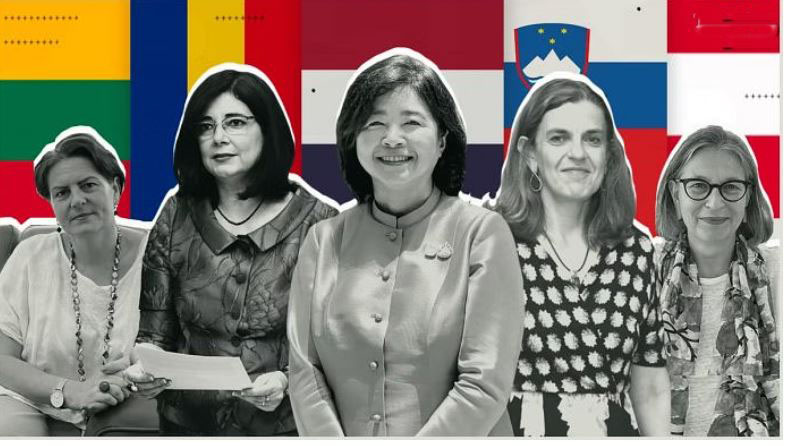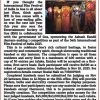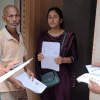Goa is abuzz with excitement as vintage bike and car owners, users, collectors and fans are decking […]

A TIGHT-KNIT AND GROWING COMMUNITY!By Pia Krishnankutty
In the News, June 08- June14 2024 June 7, 2024By Pia Krishnankutty
Women ambassadors head 25 of 158 diplomatic missions in Delhi — 11 are from Europe, 9 from Africa, 3 from Latin America and 3 from South Asia.
When it comes to women in foreign service, the story of C.B. Muthamma stands out in India. Not only was she the first woman to join the Indian Foreign Service (IFS) in 1949, she also successfully challenged in the Supreme Court the prevailing rules then, including discriminatory practices such as women having to resign from service once married and lack of postings to “difficult” countries or conflict zones.
In Lithuania, a similar figure was Magdalena Avietėnaitė in the 1920s, who was denied the rank of ambassador despite climbing up the ranks.
“She was one of the brightest officers but the committee which picks ambassadors — male-dominated at the time — didn’t promote Magdalena and she was never promoted to ambassador. But one of the prizes given on Lithuania’s ‘Day of the Diplomat’, celebrated every year on 7 November, is awarded in her name,” Diana Mickeviciene, Lithuania’s first-ever woman ambassador posted to India, told ThePrint. For Thai envoy Patrat Hongthong, serving in India since 2021, that figure is Busaya Mathelin, who became the first woman permanent secretary of Thailand’s Ministry of Foreign Affairs in 2016. “She was my senior colleague, and has served as a Thai ambassador in Senegal, Spain and Belgium, before assuming the position of Foreign Secretary,” Hongthong told ThePrint, recalling how in the past, high-ranking positions were mainly reserved for male diplomats.
Mickeviciene and Hongthong are part of a tight-knit community of 25 women ambassadors posted in Delhi — 11 hail from Europe, nine from Africa, three from Latin America and three from South Asia.
Certain European countries, like Austria, boast a foreign service where almost half of missions worldwide are headed by women. In Romania, 35 percent of heads of mission across the world are women.
In India, as of 2020, women officers comprise over 20 percent of the foreign service — 176 of 815 — and 19 serve as heads of missions.
Ruchira Kamboj is one such prominent figure, having served as India’s first woman ambassador to Bhutan and the United Nations (UN).
Certain European countries, like Austria, boast a foreign service where almost half of missions worldwide are headed by women. In Romania, 35 percent of heads of mission across the world are women.
In India, as of 2020, women officers comprise over 20 percent of the foreign service — 176 of 815 — and 19 serve as heads of missions.
Ruchira Kamboj is one such prominent figure, having served as India’s first woman ambassador to Bhutan and the United Nations (UN).
‘Strong minority’
The numbers appear to be growing, though women account for only one-sixth of a total of 158 diplomatic missions in Delhi.
“Still decidedly a minority, but a strong minority,” Austrian Ambassador Katharina Wieser told ThePrint.
India and Austria have historically shared close bilateral relations, with New Delhi notably intervening in favour of Austria during its negotiations with the Soviet Union that eventually led to its independence.
Wieser pointed out that over the years, there appears to be a tradition of appointing women to the diplomatic post in New Delhi (with concurrent accreditation to Bangladesh, Bhutan, Maldives, Nepal and Sri Lanka).
“I am the fifth Austrian female ambassador posted here, decades after Johanna Nestor (1966-70) and Erna Sailer (1971-74),” she explained.
Currently, there are eight diplomatic missions in Delhi headed by a woman chargé d’affaires. A chargé d’affaires serves as the head of a diplomatic mission in a foreign country while the ambassador is away or a new one is to be appointed.
Usually, the deputy chief of mission (DCM), the second most powerful diplomat in the mission, takes on this title. The majority of the female CdAs in India are from African countries, apart from Argentina, Guyana and Nauru.
Despite their small number, the group of women ambassadors in Delhi regularly meet for dinners and lunches. According to Romanian Ambassador Daniela-Mariana Sezonov Ţane, the women often meet and coordinate on various issues and share a “strong solidarity”.
Sometimes it is advantageous to have a room full of women because female guest speakers and interlocutors may feel more comfortable, Mickeviciene said.
“When we invite local interlocutors, who may be women achievers or others, it’s a more trusting environment when there is a room full of women. She may open up more, as compared to if it were a mixed or male-dominated room,” she told ThePrint.
“We exchange information via a WhatsApp group. I also try to organise lunches with female Indian guest speakers for smaller groups every now and then at my residence,” Slovenian Ambassador Mateja Vodeb Ghosh told ThePrint.
Ghosh, married to an Indian, draws much of her inspiration from Darja Bavdaž Kuret, who served in India from 2013-2015, and later as Permanent Representative of Slovenia to the UN.
“I served with Ambassador Bavdaž for one year in India, and later on when she served as State Secretary at the ministry of foreign affairs. I have learnt most diplomatic skills from her. In my experience, female bosses were more willing to be instructive mentors and teachers than male colleagues,” she told ThePrint.
At times, the nature of a diplomatic career can pose certain obstacles to family life due to frequent moves.
“When I joined the foreign service, in 1996, there were very few women diplomats in the Romanian Ministry of Foreign Affairs. Being posted abroad as a woman was perceived as a big challenge, since a man accompanying his wife in her posting, freezing his job at home, was very unusual,” Ţane told ThePrint, though adding that this has now improved.
The situation is further complicated when both wife and husband are serving.
According to various ambassadors ThePrint spoke to, more often than not, a woman, even if serving, will step down and accompany her husband to a new posting. The vice-versa is, however, less frequent.
(Edited by Nida Fatima Siddiqui)
Courtesy: The Print















